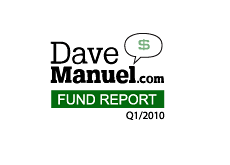What is the Pattern Daytrader Rule?
 When the Internet bubble popped in mid 2000, the NYSE and NASD moved quickly to introduce something called the "Pattern Daytrader Rule" to the SEC. On February 27th, 2001, the SEC approved this rule change. At the time, the stock market bubble had popped, and everyone was pretty much sick of the stock market. CNBC had been long turned off, sites like Ragingbull.com saw huge drops in traffic, and it was no longer a national past-time to follow the stock market.
When the Internet bubble popped in mid 2000, the NYSE and NASD moved quickly to introduce something called the "Pattern Daytrader Rule" to the SEC. On February 27th, 2001, the SEC approved this rule change. At the time, the stock market bubble had popped, and everyone was pretty much sick of the stock market. CNBC had been long turned off, sites like Ragingbull.com saw huge drops in traffic, and it was no longer a national past-time to follow the stock market.What is the Pattern Daytrader Rule exactly? It applies to the buying and selling of the same security in one day, otherwise known as a daytrade. This rule states that if you have less than $25,000 in your account, you are subject to the Pattern Daytrader Rule. This means that you can only execute three day-trades over a 5 business day period. If you don't want to be subjected to this rule, then you need to have a margin account with at least $25,000 in it.
So what does this mean exactly? Let's say that you have an account with $21,000 in it. You are a fairly successful trader, who has always posted yearly profits. Let's say that you are home from work for a week, and decide to be a bit more active in the stock market. You buy a stock on Monday and sell it the same day for a nice profit. Then you do the same thing on Tuesday and Wednesday, banking a profit both times. You log into your account on Thursday, and are told that you can't execute any more new trades until Monday at the earliest. You may sell existing positions, but you can't buy any new positions at all. If you had over $25,000 in your account and had a margin account, this wouldn't be an issue and you could trade all you wanted. Or, if you held the stocks overnight, then they wouldn't qualify as a daytrade.
The NASD and NYSE said that they proposed this rule to "protect daytraders from themselves." As you can guess, there was an ulterior motive here. The NASD and NYSE, whose board of directors is comprised of some of the biggest firms on Wall Street, were seeing their retail trading numbers being eroded by the Ameritrades and E-Trades of the world. No longer could firms such as these charge their retail investors $59.95 for a 100 share trade. They were pissed off about it, and waited until the market collapsed before sliding in this rule change. There is no way this would have gotten through in early 2000 when the boom was still underway. By restricting people's ability to day-trade, these firms were hoping that people would move their accounts back to the Goldman Sachs and Merrill Lynch's of the world.
Let's be real. How can you justify this rule? I save up $10,000 in after-tax money, and I want to dabble in daytrading. This is my money. Why can't I trade this money the way that I see fit? Why are there restrictions on how much I can trade? If I execute three daytrades over a three day period, how can you basically lock me out of my account the next two business days following that? This rule is extremely unfair, and can't be justified in my mind. The circumstances in which the rule was introduced was shady, and the Pattern Daytrader Rule itself is shady. There is nothing fair about it.
Filed under: Stock Market Education | General Knowledge



